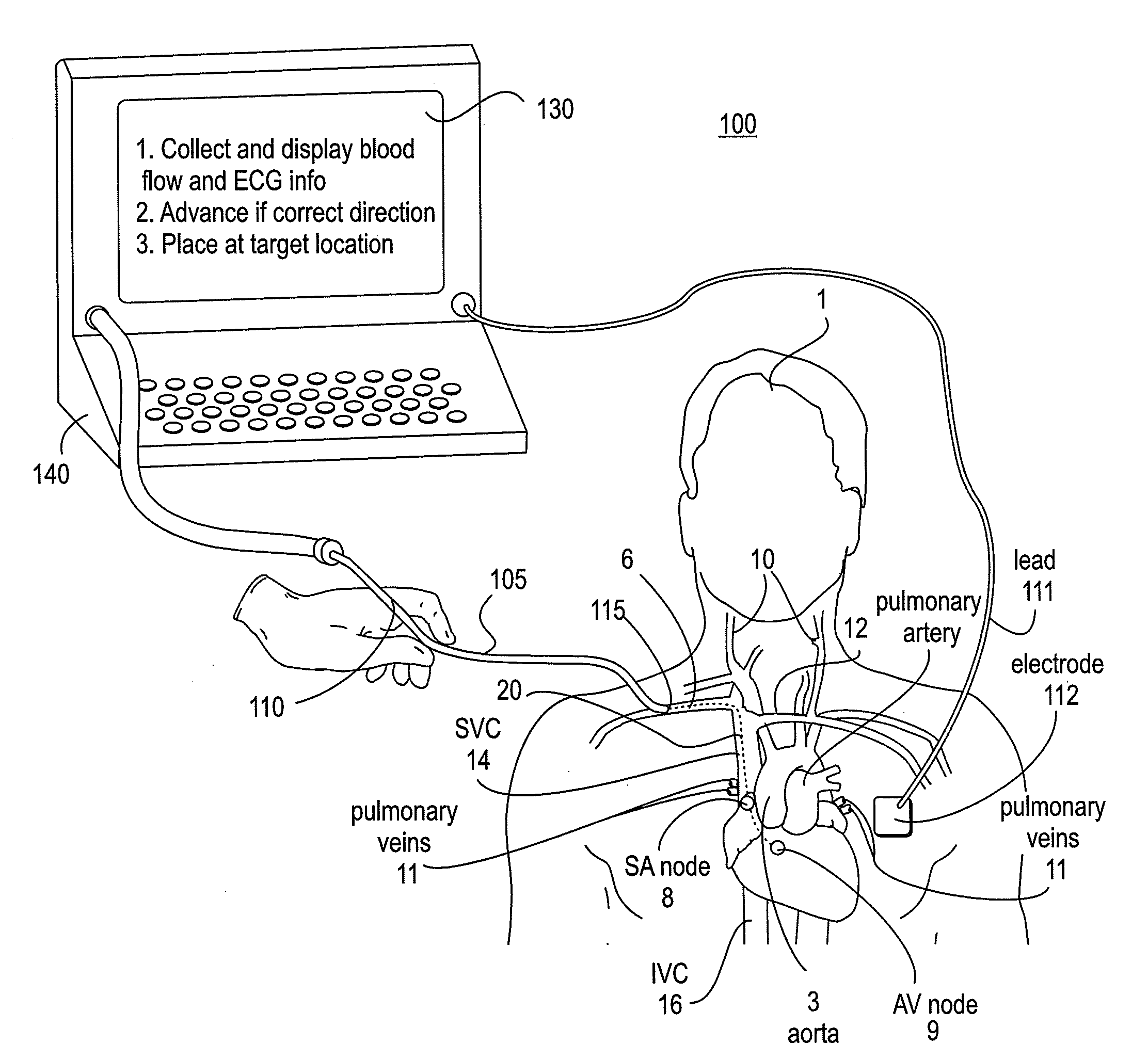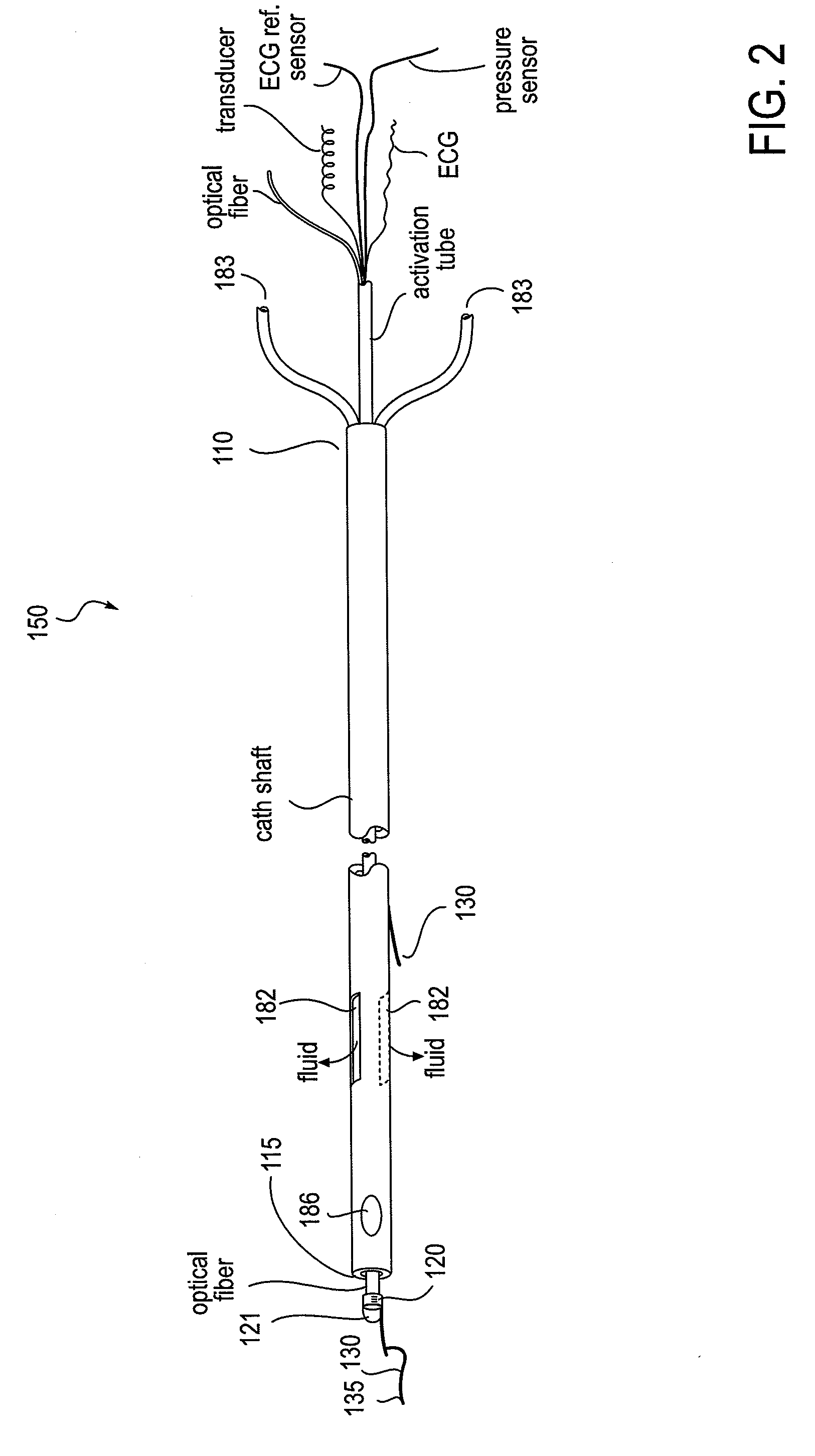Apparatus and Method for Endovascular Device Guiding and Positioning Using Physiological Parameters
a technology of endovascular devices and physiological parameters, applied in the direction of catheters, instruments, angiography, etc., can solve the problems of inaccurate method, decreased effectiveness, perforation of the heart, etc., and achieve the effect of increasing the reliability of information and accuracy of location identification
- Summary
- Abstract
- Description
- Claims
- Application Information
AI Technical Summary
Benefits of technology
Problems solved by technology
Method used
Image
Examples
Embodiment Construction
[0090]Embodiments of the present invention provide guided vascular access devices, systems for processing signals from the guided vascular access devices and user interface for providing information to a user based on outputs from the processing system. FIG. 1 illustrates one embodiment of an exemplary endovascular access and guidance system 100. The system 100 includes an elongate body 105 with a proximal end 110 and a distal end 115. The elongate body 105 is any of a variety of endovascular devices adapted to insertion into and navigation through the vasculature of the patient 1. FIG. 1 illustrates the distal end 115 inserted into the basilic vein 6. The expected path of travel (dashed line 20) in this illustrative example is into the a portion of the heart 20 or within the superior vena cava 14 in proximity to the sinoatrial node (SA node) 8. The aorta 3, the pulmonary arteries, pulmonary veins11, the jugular veins 10, the brachiocephalic vein 12, inferior vena cava 16 and atriov...
PUM
 Login to View More
Login to View More Abstract
Description
Claims
Application Information
 Login to View More
Login to View More - R&D
- Intellectual Property
- Life Sciences
- Materials
- Tech Scout
- Unparalleled Data Quality
- Higher Quality Content
- 60% Fewer Hallucinations
Browse by: Latest US Patents, China's latest patents, Technical Efficacy Thesaurus, Application Domain, Technology Topic, Popular Technical Reports.
© 2025 PatSnap. All rights reserved.Legal|Privacy policy|Modern Slavery Act Transparency Statement|Sitemap|About US| Contact US: help@patsnap.com



